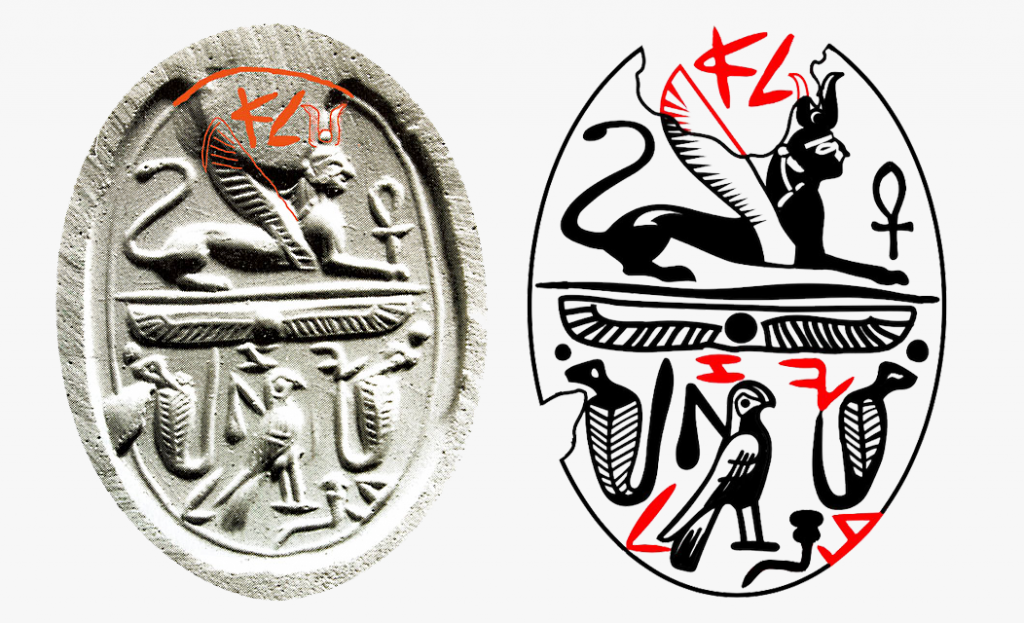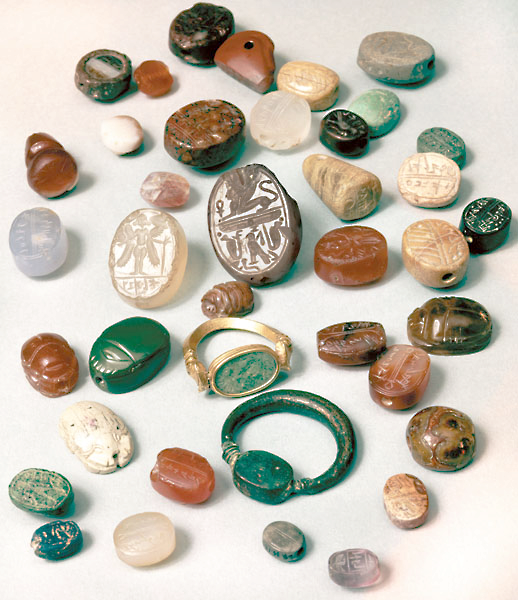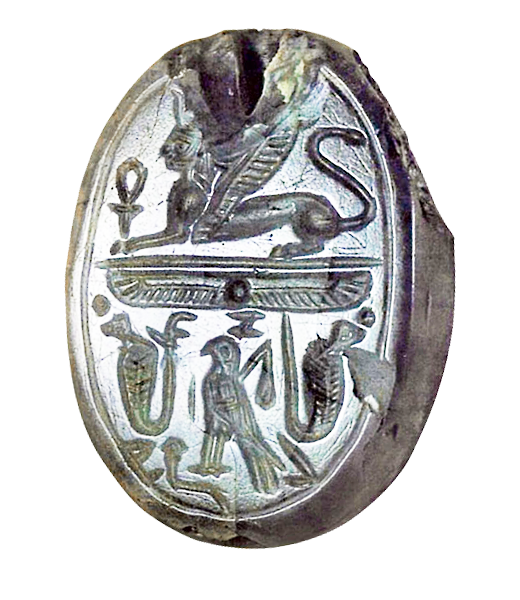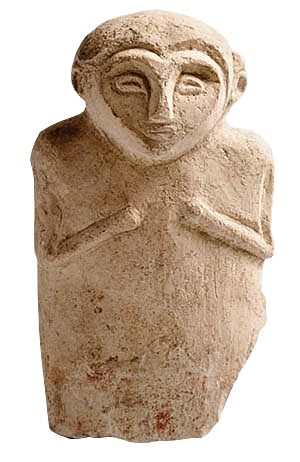
Bible, History, Archaeology
Bible,
History,
Archaeology
A Jezebel seal,
wife of Ahab king of Israel?
Introduction
Numerous ancient seals have been unearthed in the Near East. They are generally made of limestone, semi-precious stones, bone, glass, bronze and even silver.
Many seals were set in rings, usually incised with the owner's name, and used to identify, authenticate and protect the contents of documents.
 Making a seal
Making a seal
Because most seals were pressed into moist clay to form bubbles used to secure the scrolls - serving as a signature - the symbols and letters were engraved upside down. When pressed into the clay, the images of the seal and the inscription appeared correctly.
The two images opposite show the seal engraved upside down, and its impression in its normal reading face. Israel Museum, Jerusalem.
 Who could this seal belong to?
Who could this seal belong to?
This seal bears no. 740 of the Corpus of West Semitic Stamp Seals by Nahman Avigad and Benjamin Sass (Jerusalem, 1997).
Decorated with symbols and letters, this stone seal undoubtedly belonged to a member of high society. It was part of a private collection donated to Israel's Department of Antiquities in the early 1960s. Its unusually large size (approx. 3.2 cm) and the common Egyptian-Phoenician symbols of royalty and divinity strongly suggest that it must have belonged to a king or queen.
Image opposite: the «Jezebel» seal from the Corpus of West Semitic Stamp Seal by Nahman Avigad and Benjamin Sass © BAR.
Description

Images opposite: image on the left with proposed damaged letters.
Image on the right with the letters (YZBL) already present on the seal. © BAR.
With the reconstruction of two additional letters (L’) in the damaged area at the top of the seal, Professor Marjo C. A. Korpel of Amsterdam's Protestant Theological University argues that the inscription should probably originally have been read L'YZBL, or «(belonging) to Jezebel», and therefore could well be the personal seal of the queen mentioned in the Bible.
Of all the thousands of seals unearthed with Hebrew inscriptions, only around 35 belonged to women.
Controversial identification
In response to an article in the daily Haaretz anticipating the publication of Jezebel's seal by the magazine Biblical Archaeology Review (BAR n° March/April 2018), paleographer Christopher Rollston of the’Emmanuel School of Religion wrote that Professor Marjo Korpel's identification of the seal as that of Queen Jezebel is not «tenable». According to Professor C. Rollston, the writing on the seal cannot date from the ninth century BC; it must be later and, therefore, after the story of the biblical queen. However, other specialists believe that the seal and its inscription could well date from the ninth century BC.
Professor André Lemaire's response

«This seal poses many identification problems: in the corpus, it is presented as uncertain Phoenician. In fact, we hesitate between Israelite (northern kingdom) and Phoenician. The date can only be very approximate: late 9th-8th century BC.
It's true that there have been one or two articles proposing to identify her with Jezebel, wife of Israel's king Ahab, but this is unlikely as she died around 841 BC, during Jehu's coup d'état, apparently predating the probable dating of this seal. In fact, no inscribed West Semitic seal of Jezebel's time is known. Most specialists therefore reject this identification».
Image opposite: some ancient seals on display at the Israel Museum in Jerusalem. Israel Museum, Jerusalem.
Jezebel according to the Bible
Jezebel (Hebrew: איזבל, Izével) was a princess of Phoenician origin, daughter of Ethbaal I, priest of Astarte, king of Tyre and Sidon (1 Kings 16,31 ; Against Apion 1,18). She was the wife of Ahab king of Israel (northern kingdom), who reigned from around 874 to 853 BC.
Image opposite: Human-Ram, deity of Sidon. With human features and the eyebrows, nose and horns of a ram, this painted limestone figurine represents a deity and dates from 1650 BC (Middle Bronze Age). © Claude Doumet-Serhal.
Her story is told in the Bible, in the First and Second Books of Kings of the Old Testament. She is portrayed as an evil foreigner who incited the king and the people to turn away from the worship of the Lord by imposing, by force in the kingdom of Samaria, the divinities of Baal and Phoenician Astarte (1 Kings 16, 32-33). She endeavors to have the prophet Elijah the «Tischbite» put to death (1 Kings 19, 1-2) who, victorious in a confrontation against 450 prophets of Baal and 400 prophets of Astarte (1 Kings 18, 1-40), is opposed to it.
Around eleven years after Ahab's death, she suffered a terrible fate: on Jehu's orders, she was dislodged, trampled underfoot by horses and her body devoured by dogs after burial (2). Kings 9, 7, 30-37).

 Making a seal
Making a seal Who could this seal belong to?
Who could this seal belong to?